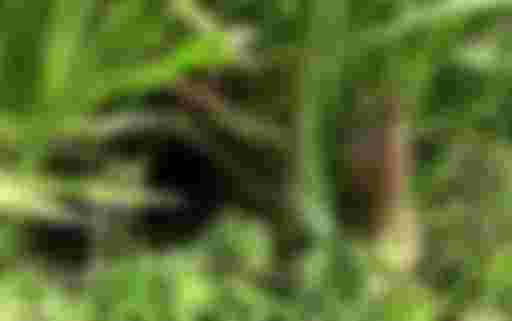Methods of killing rats to protect crops

Rats can be killed or controlled in two ways.
One. In non-chemical control management and
Two. In chemical control management.

However, the control system for killing rats depends mainly on the species of rats, the type of damage, the amount, the condition of the crop and the timing. Again many times a particular control system may not be effective or multiple control measures may need to be taken.
Non-chemical control system


The presence of rats
They have to be vigilant about their presence in the house, warehouse or field and control measures have to be taken as soon as their presence is noticed.
Keeping the house or field clean and tidy

There are no rats in clean places. So the presence of rats can be easily controlled by removing the dirty garbage of the house or keeping the field free from weeds.
Keeping the surroundings of the house or field clean and tidy
Rats can be controlled indirectly by clearing unwanted bushes in or around the home, covering food, not throwing leftovers, and cutting large grasses or weeds or bushes in and around the field.
Isle leaves thin

If the field isle is cut and kept thin or small, the rats will not be able to stay in the hole in the aisle and indirectly the rats will be controlled in the field.
Catch the rat to get the trap
Different types of rats can be killed to control different types of traps. Rats usually move around the walls of the house. On the sidewalks, on the scaffolding or in places where rats are more common, and 30 cm of freshly dug holes in the field. The trap is to be set away. Among the different types of traps are Chitagur pitcher traps, traps made of wood or iron, traps made of laurel shells, sotki faucets, catch mills etc. Dried fish, coconut shells, biscuits, bread etc. can be used in the trap.
Pour water into the hole
It is possible to bring a rat out of the hole and kill it by pouring water into the hole.
Dig holes
The presence of rats or digging freshly dug holes can be controlled by killing rats. Such measures are usually taken in crop fields or by digging holes in the aisles of the fields. If measures are taken while the crop is in the field, the crop may be damaged, so such measures have to be taken at the end of the harvest.
With smoke
After collecting paddy or wheat from the field, the dried chillies are burnt and immediately caught in the mouth of the hole or inserted into the smoke, which causes the rats to come out. Rats that come out have to be beaten to death.
Cultivate together
If the same crop is cultivated together in the field and collected at the same time, the birth rate of rats is reduced due to not getting enough food for a long time and indirectly the rats are controlled.
Take preventive measures
The gaps in the entrances to houses, warehouses or places where food items are kept can be closed with metal sheets or thin mesh wire mesh as required.
Using glue traps
In order to catch rats, one has to apply non-toxic glue on wood board, coarse cardboard, equal tin, hardboard etc. in the house or warehouse and leave it on the rat movement road at night or make a circle with glue around it by keeping tempting food in between. When it comes to food, rats get stuck in the glue. The trap can be reused by killing the trapped rats and burning the hairs of the trap and adding more glue to the trap.
Through biological control
There are many parasitic animals that eat rats. For example, cats, owls, eagles, wild cats, foxes, badgers, snakes, guisaps, etc. eat a lot of rats. If the presence of these beneficial animals in the environment can be ensured, it may be possible to control the number of rats.
Through the rat extermination program
It may be possible to control the number of rats by conducting rat eradication campaigns 2-3 times a year before the onset of rat infestation in different crops in different seasons. For this, besides taking various programs to increase public awareness, it is also necessary to ensure the receipt of rat poison for killing rats.
Chemical control system
Like many other countries in the world, Bangladesh is also using chemical methods to kill rats. Chemical methods can be further divided into two based on toxicity.
1. Acute or immediate poisoning
2. Long-term poisoning
Among the approved poisons available in the market in Bangladesh, Zinc Phosphide is the acute or immediate poison. Rats die instantly after playing with this poison. Dead rats also lie around the place where the venom is placed. Farmers therefore prefer this type of bisatop. If 5 g of zinc phosphide poison is left on the paper or tree leaves in the afternoon around the newly dug hole, the rat will come out of the hole in the evening and eat and die Again the soil at the mouth of the hole has to be removed and 5 g of Bishtop has to be tied in a paper bundle and put inside the hole to close the mouth The rat took the poison bundle along with the paper bundle and ate it with the baby and died. However, it is not right to use this poison for more than two days in a row. Because when they see a dead rat, other rats no longer want to eat the poison. If you can develop the habit of eating rats by using non-toxic bait for 2-3 days before using the bait, then the effectiveness of using the bait increases.
Long-term poisons are again of two types. Multiple poisons such as Claret T, Storm that rats die once they play, and multidimensional poisons, which rats have to eat more than once, such as Lanirat, Brompoint, Recumin. These long-term toxins destroy the rat's ability to coagulate. As a result, the rats become weak and die due to continuous bleeding inside and outside the body of the rat. If these poisons are left in a container outside the hole, the rat eats again and again and then dies somewhere else or inside the hole. Because it takes about 1-14 days for a rat to die after consuming long term poison. However, most of the rats die within 5-6 days. In addition, aluminum phosphide is available in the market in tablet form under the names of Foxtoxin, Selfs, Quickfos, Quickfume, Desiagas XT etc. In the holes where there are rats, a tablet should be placed inside the hole and the mouth of the hole should be closed well. The mouths of all the new and old holes in the vicinity have to be closed well so that the ventilation is completely closed. The tablets mix with the wet air in the hole to produce a toxic gas called phosphine, which causes a deadly reaction on any living thing, and the animal dies. The rat problem is a national problem. Everyone must come forward together to tackle this problem. By killing the rats, the number of rats should be kept under control and measures should be taken to protect valuable crops as well as home resources and other infrastructure.




